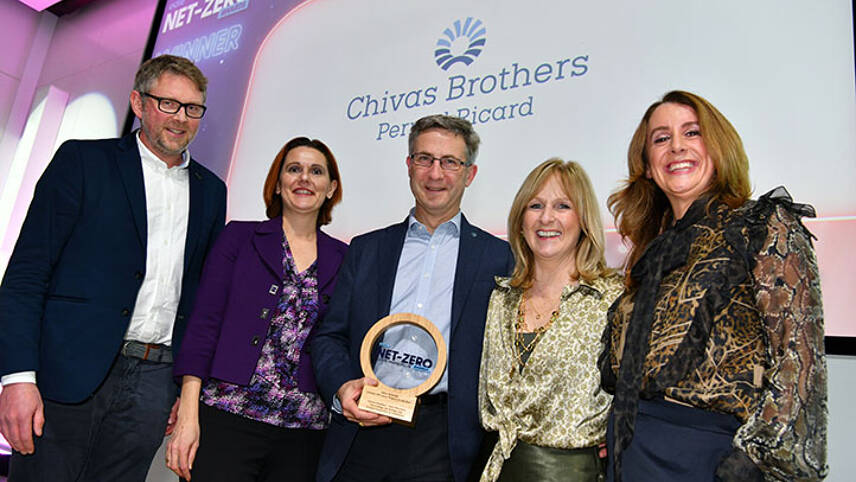This premium content is exclusive to edie Members.
To find out more about edie Membership, please click below.
If you are an existing member, login here

At a glance
Who: Chivas Brothers
What: Heat recovery technology
Where: Glentauchers distillery
When: Ongoing
Why: To save on energy costs and reduce carbon
The challenge
Whisky making is an energy-intensive process. The distillation process involves both a wash still and spirit still and boiling up these stills requires a lot of energy. With traditional pot still distillation most of the energy to boil the still is lost. Given the current costs of energy and the need for organisations to decarbonise, a solution that can tackle both in tandem is needed.
The solution
Chivas Brothers – the Scotch whisky business of Pernod Ricard – applied enhanced heat recovery technologies to whisky distillation at its Glentauchers distillery. The technologies recover energy from the spirit vapour and use it to boil the still, significantly reducing the amount of energy needed in the production process.
How it works
The goal for this project was to demonstrate the successful installation and operation of Mechanical Vapour Recompression (MVR) Technology in combination with existing Thermo-Vapour Recompression (TVR) systems to recycle the maximum possible waste heat from pot still condensers.
MVR was recognised as the best technology available to increase the heat recovery rate. A feasibility study was completed as part of a wider Engineering Graduate project to assess the potential application of MVRs alongside existing heat recovery techniques within a malt distillery. This led to an outline design and cost-benefit analysis, before moving into specification of the MVR technology.
The actual design process was split into three parts. Firstly, the project examined the overall design of the energy system at the site and how it could best incorporate MVR technology into the most efficient overall heat balance. Following that, Chivas Brothers went on to identify what type of MVR was most suitable for the site’s needs before carrying out the detailed design of the components in an MVR system for a pot still.
Chivas Brothers noted that it is challenging for distilleries to accommodate MVR technologies as the programme for installation is complex and varies per distillery due to volume requirements and space constraints on each site. The work was carried out over various shutdown periods, in a bid to reduce the length of site closure needed to complete the installation. This minimised the production disruptions at the site.
By reusing heat, energy demand is dramatically reduced. The company estimates that if these technologies were applied by the wider industry’s malt distilleries alone, this could equate to a saving of some 1,756Gwh per year – enough to power 605,000 average homes for a year.
The business will also host a series of dedicated open house events at its Glentauchers site, creating an opportunity for other distillers to see the technology, how it has been integrated and facilitate industry learning.
The results
To date, having rolled-out the technologies across all pot stills, total energy consumption has reduced by almost by half (48%) and total carbon emissions have reduced by 53% as a result at the distillery. This represents an energy saving equivalent to powering 4,979 average UK homes – more than all the houses in Keith – for an entire year.
Once rolled-out across all viable sites, Chivas Brothers expects these technologies to reduce its overall energy consumption and carbon emissions in distillation by one third, which is more than 30,000 tonnes of CO2 per annum.
The organisation
The company’s rollout of these enhanced heat recovery technologies plays a critical role in Chivas Brothers’ ambitious plans to achieve carbon-neutral distillation by 2026.
Currently, all 12 Chivas Brothers malt distilleries have some form of heat recovery but the company is planning to make the MVR installation at the Glentauchers site open source, to help other distillers accelerate their own journey to net-zero.
The judges said:
“This entry was our winner because it’s an innovative project that overcame multiple challenges, ties into the wider strategy and has the potential for industry-wide impact. It used enhanced heat recovery on top of an existing system but what really made this project stand out is the great efforts made to ensure others in industry can learn from results by making it open source. This is a credible approach to take in competitive market.”
© Faversham House Ltd 2024 edie news articles may be copied or forwarded for individual use only. No other reproduction or distribution is permitted without prior written consent.

